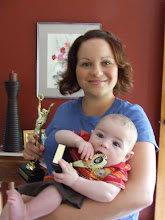
Image manipulation is the process of "altering [an] image using computer program tools and software to produce a contrived image, often generating new meaning." (M/Cyclopedia of New Media, 2004).
Cronklin (2001) argues that media technologies carve the pathway for manipulating images and thus altering reality. He also suggests that representation of images is a misrepresentation of the truth, especially in regards to cultural diversity (Cronklin, 2001). This may be apparent for large advertising agencies and journalists, however, for use in the classroom it is an interesting way for students to express their creativity. "Many approaches to creativity stress human potential for self-realisation, personal growth and fulfillment." (Treffinger; Isaksen & Firestien, n.d.).
I have manipulated my own image (see above) using 'Picnik', which provide a free sample of possible tools to change your photo. This site would be great to use in conjunction with Flickr, as it allows you to access photos from many different sources. The students could put together a photo story of their own experience on school camp for example, as well as discuss The Arts aspects of light and shade, colour composition ect.
Regards,
Erin.
Sources:
Cronklin, W. (2001). The Illusion of Diversity: when ethics, technology and diversity clash. Diversity Factor Journal, 9 (2), 5-10. (Cited in http://wiki.media-culture.org.au/).
M/Cyclopedia of New Media. (2004). Digital Image Manipulation. [Electronic resource] (http://wiki.media-culture.org.au/index.php/Digital_Image_Manipulation). Retrieved 16 August 2009.
Treffinger, D.J.; Isaksen, S.G. & Firestien, R.L. (n.d.). Theoretical Perspectives on Creative Learning and its Facilitation: An Overview. [Electronic resource] (http://www.cpsb.com/research/articles/creative-problem-solving/). Retrieved 16 August 2009.

No comments:
Post a Comment